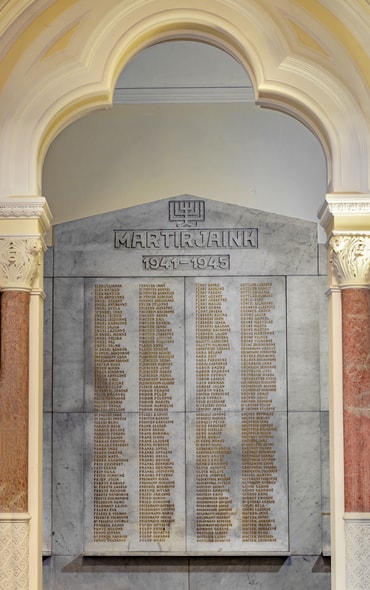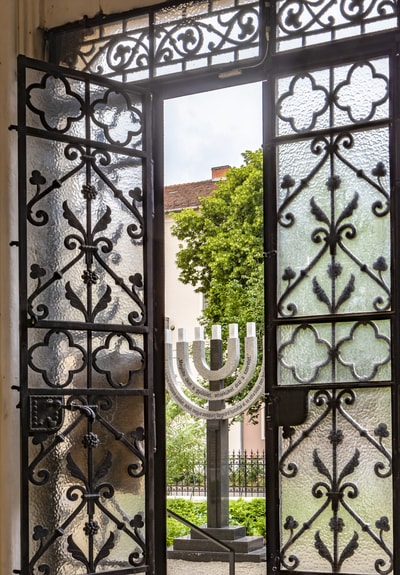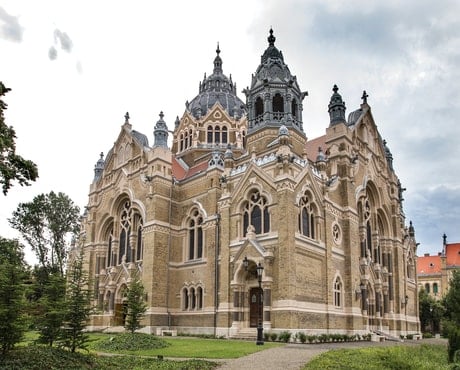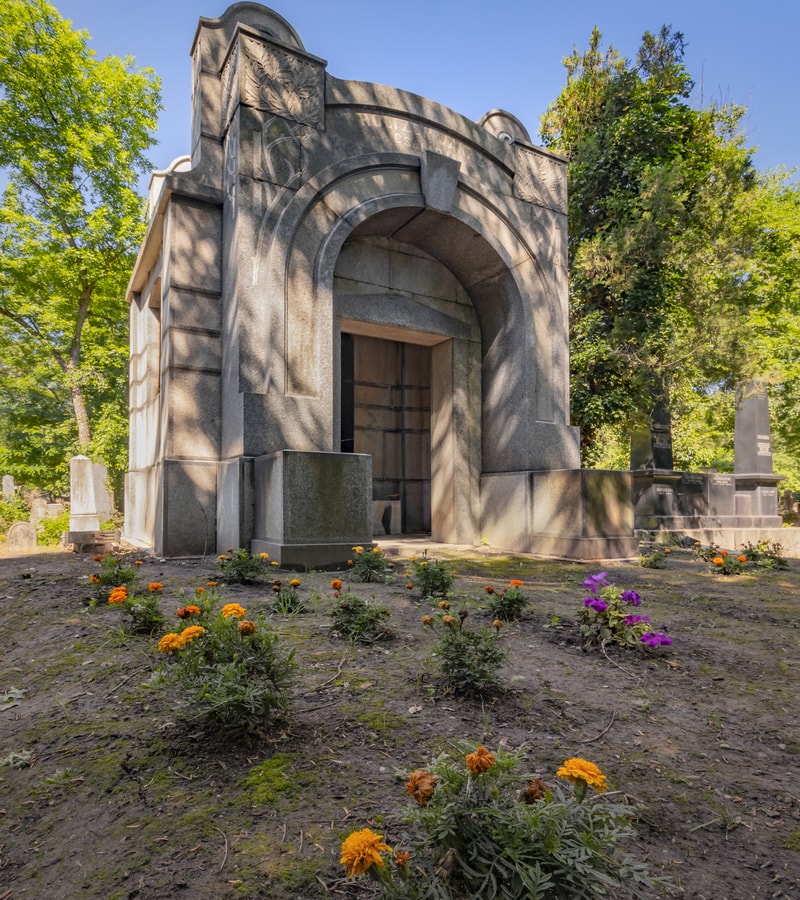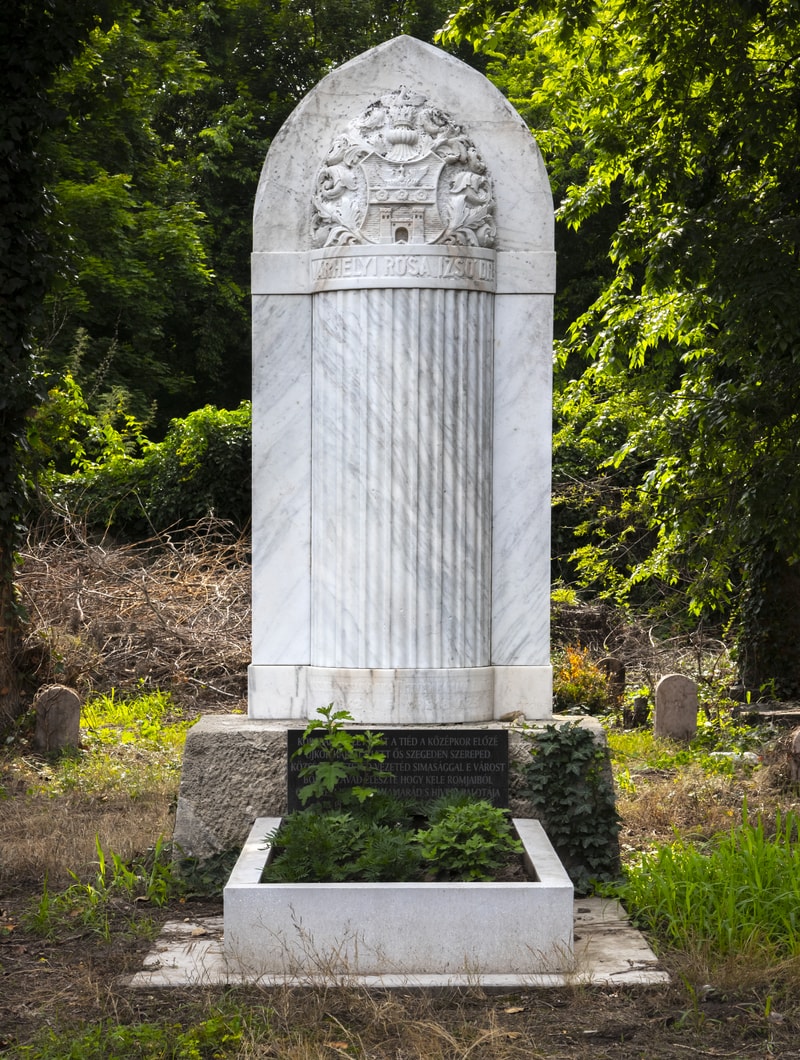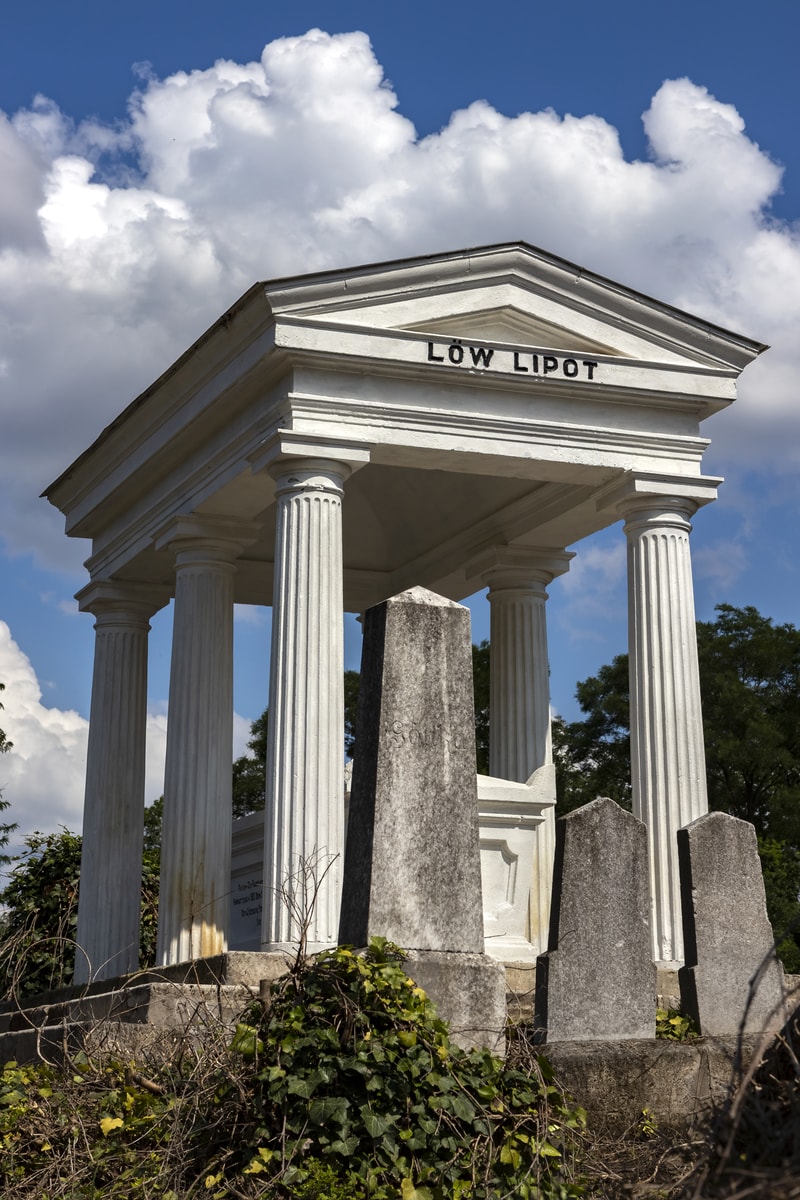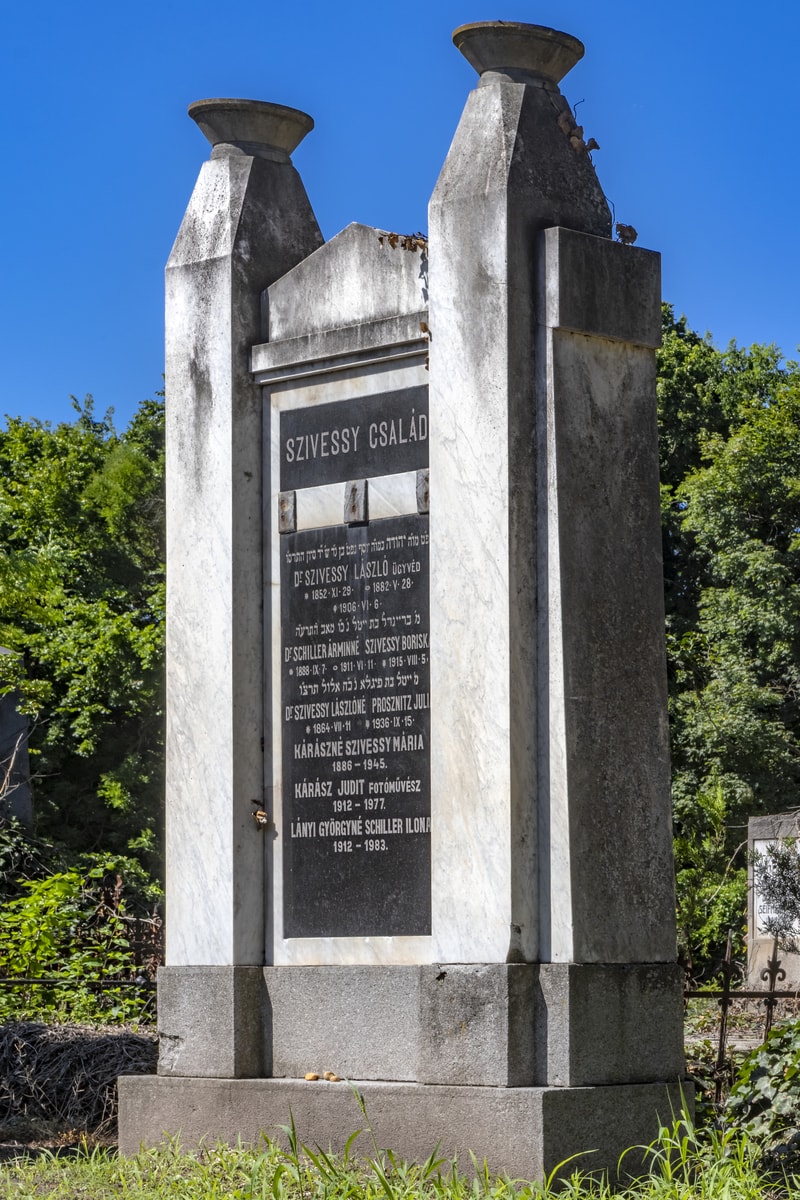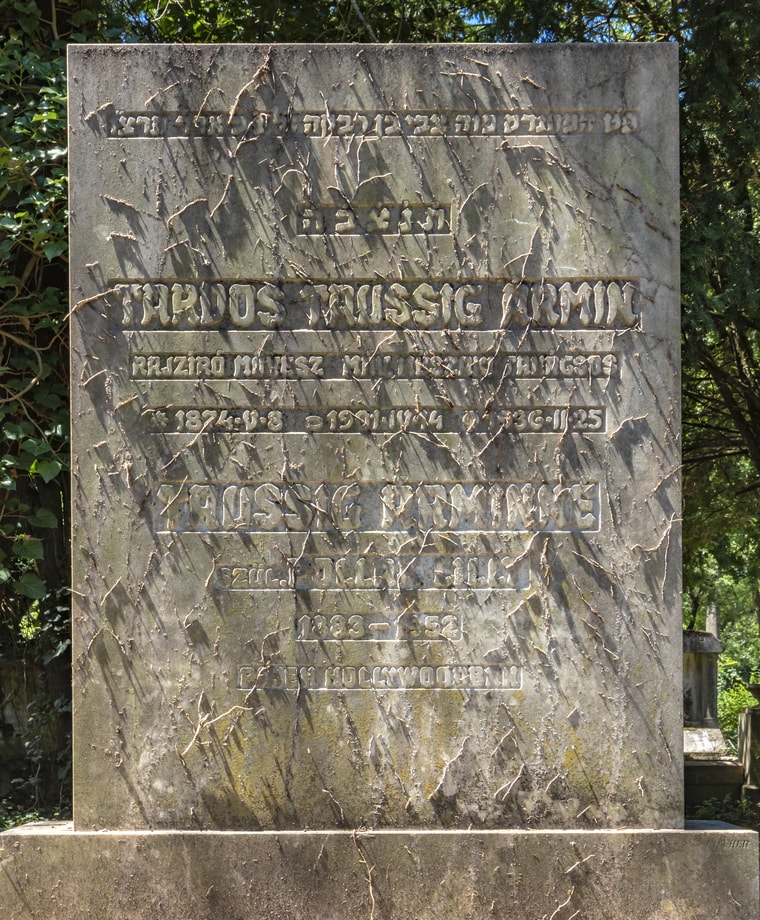In the following years of the Soah, the most important issues were restarting the religious and community life by the surviving Jewish community members in Hungary. Nevertheless, special emphasis was put on individual and collective grief and remembrance, which were eased by different kinds of memorial events and soon erected monuments. The memorial can be found in the entrance hall of the New Synagogue
Archives: Directory listings
Directory listings
Szeged Menorah
The four-meter-tall menorah was erected on 14 September 2014 to commemorate the 70th anniversary of the deportation of Jews from Szeged and its surrounding areas. The first Jewish ghetto was created around the synagogue and was bordered by Bolyai, Jósika, Hajnóczy and Gutenberg Streets and Bartók Square. The menorah can be found in the yard of the New Synagogue.
The New Synagogue
The New Synagogue of Szeged is considered as the masterpiece of the famous Jewish architect Lipót Baumhorn; it is the second largest synagogue in Hungary and the fourth largest one in the world. It is still a functioning one, being the third synagogue of the community.
Fülöp Wimmer’s Grave
One of the most peculiar tombs of the Jewish cemetery belongs to Fülöp Wimmer. The tall column as well as the stone memorial with hemp leaves together refer to his profession. He was the director of Szeged Hemp Weaver Company for over 40 years and was President of the Chamber of Commerce and Industry of Szeged. Fülöp Wimmer was one of the most influential hemp industrialist of the Austro-Hungarian Monarchy. Grave location: Parcel 90, line 3, grave 7
The Holtzer Family Crypt
The crypt of the Holtzer family is one of the extraordinary, beautiful Art Nouveau tombs of the Szeged Jewish cemetery. Despite its ruinous state it still demonstrates the once outstanding social and economical stance of the family. Tivadar Holtzer, establisher of the first football
team and football pitch in town. Crypt location: Parcel 62, line 2, grave 2
Grave of Dr. Várhelyi Rósa Izsó’s
Dr. Várhelyi Rósa Izsó was the first Jewish lawyer in the city, president of the Jewish community. His Art Deco-sytle grave is a monumental memorial closing down the end of the first main road of the cemetery. Dr Izsó Rósa (Rosenberg) (1842–1918) was a famous president of the Szeged Jewish Community, a well-known public figure and the first Jewish lawyer in the town of Szeged. He was member of the committee of 12 people responsible for rebuilding the city after the Great Flood of 1879. His house is still standing next to the National Theatre at 4 Stefánia Street. Grave location: Parcel 24, line 0, grave 2
Chief Rabbi Lipót Löw’s Grave
Lipót Löw (1811–1875), originating from Moravia, was a famous Chief Rabbi of Szeged where he served in his position from 1850 until his death. He was the first representative of the Hungarian moderate reformed (Neolog) movement. He highly contributed to the creation of Jewish Emancipation Law of 1867 and is one of the most influential Neolog rabbis in Hungary. Grave location: Parcel 10, line 1, grave 3
Memorial of Mrs. Mária Kárász
Among the most important tombs of the cemetery, we find the Szivessy family memorial. The family was an outstanding patron of arts and culture, having several outstanding members, such as Mária. Mrs. Mária Kárász was a leading socialite and rests beside her daughter, Judit Kárász. Memorial location: Parcel 12, line 2, grave 1
Grave of Graphic Artist Ármin Tardos-Taussig
The Jewish cemetery of Szeged is the final resting place of numerous outstanding artists of Szeged, including graphic artist Ármin Tardos-Taussig. The inscription is situated on the eastern side of his gravestone made of red limestone. The letters, which are delicately and artistically shaped, protrude from the engraved surface of his memorial. Although his wife’s name is also on the gravestone, she was not buried here. This location of this grave is: Parcel 71, line 1, grave 1
Márk Pick’s Grave
Márk Pick’s, world-famous salami maker’s simple, obelisk-shaped gravestone can be found in the Jewish cemetery of Szeged.
Márk Pick (Szeged, 1843 – Budapest, 1892) started his career as a sales assistant, and then he became a tradesman in 1869. He worked as a corn-merchant from 1870 until the ‘80s. He also tried small-scale salami production from the mid ‘70s. This location of this grave is: Parcel 6, line 12, grave 16
